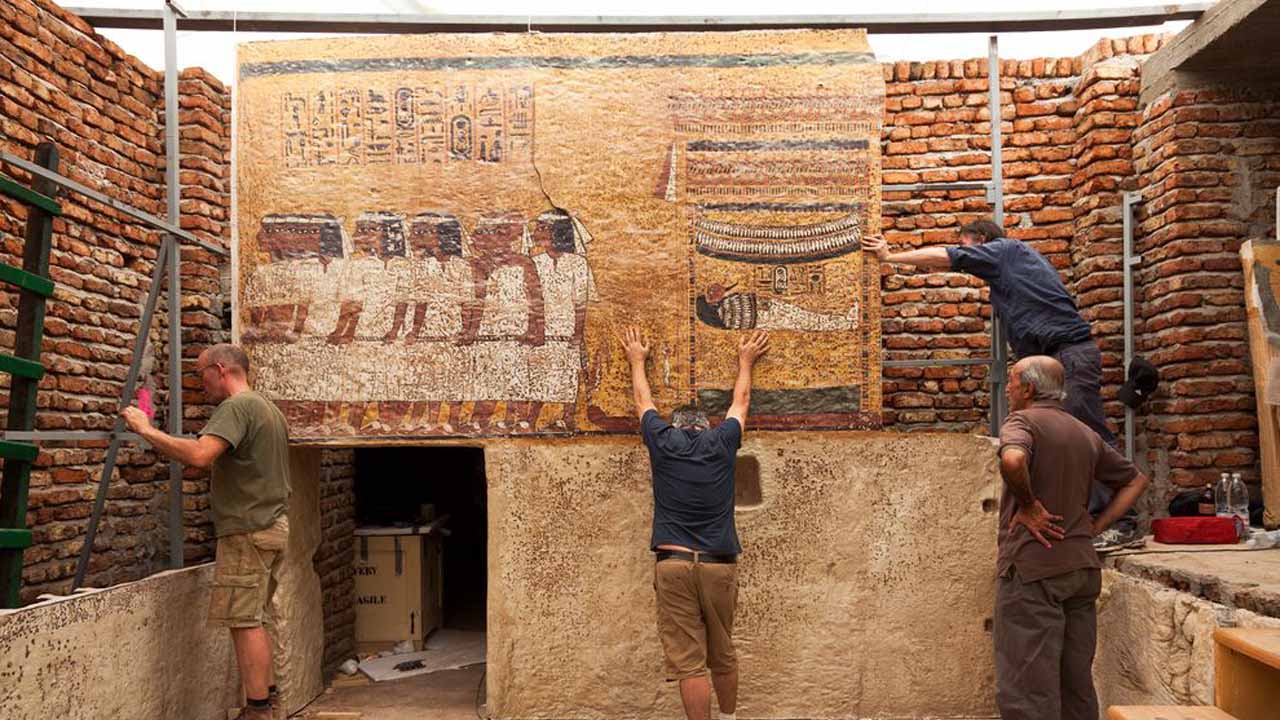Adam Lowe, a British artist, has spent the last five years making a perfect replica of the tomb of Tutankhamun, one of the most famous archeological sites in the world. Thanks to advancement in 3D printing technology, Lowe was able to make a replica that simulates the real thing down to fractions of a millimeter. Lowe told National Geographic:
“Every bit of micro bacteria is in its place, every crack, every flake of paint. It’s effectively like a portrait, or a performance, of the tomb from when we recorded it in 2009.
…
It’s King Tut mediated through new technology and human skills. It’s this mix, where technology comes together in the right spirit and communicates something very emotionally powerful that few expected.”
His creation presents a solution for a problem that has plagued archeologists as long as they’ve been digging up amazing stuff – how to preserve an ancient, fragile site while allowing it to be viewed by the public. A solution was found for the cave paintings of Lascaux long ago, where visitors have been marveling for years at a replica placed over the original. There is some controversy over the authenticity of these simulacra – is it worth it to visit a historical site only to see a recreation? It seems the consensus of the archeological community is “yes.” Lowe addressed this issue in his interview:
“If what’s important is deepening understanding, then this replica is an approach that can lead to a deeper understanding. If it’s about some kind of prejudice that you have to see the original, then you need to confront your own prejudices.”
It’s an interesting take on the ubiquity of “fakes” in our modern world, where the infinite digital copies are allowing the concept of an authentic “original” to fade into obsolescence. “Henceforth, it is the map that precedes the territory,” indeed.
The movement towards replication comes via a new wave of thought in the field: “cyber archeology.” Cyber archeology focuses on using our ever-improving technological tools to spread the “experience of antiquity” any and everywhere, as National Geographic put it. Thomas Levy, a professor of archeology at UC San Diego, is excited about what the future holds:
“With this amazing data I’ve collected, I can then take you into a 3-D visualization theater and we can enter the excavation. I can be in San Diego and I can get a cup of coffee and I can throw in my 3-D data set with geo-reference pics of the actual excavation, and I can walk around in it again.”
Adam Lowe’s work with the Factum Foundation is on their website, and over here you can watch Thomas Levy give a TED talk on cyber archeology.
(Photo via Alicia Guirao, National Geographic)


